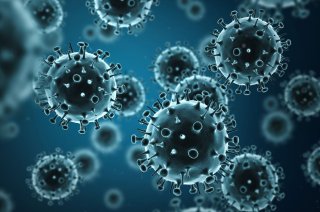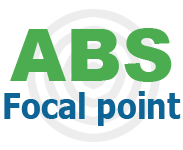
category_news
Specialised international ABS instruments: the PIP Framework
Specialised ABS instruments can help you to minimise the administrative burden while complying with ABS rules. The Pandemic Influenza Preparedness (PIP) Framework is a specialised ABS instrument dealing specifically with influenza viruses with human pandemic potential.
Specialised international ABS instruments
In addition to the general international instruments that address Access and Benefit-sharing, such as the Convention on Biological Diversity (CBD; see the article ‘International instruments on ABS: CBD, Nagoya Protocol and EU regulations’), there are also specialised international ABS instruments.The Pandemic Influenza Preparedness (PIP) Framework is a specialised ABS instrument dealing specifically with influenza viruses with human pandemic potential.
The PIP Framework forms an EU-recognised specialised international ABS instrument. This means there are no obligations related to the EU ABS Regulation (Regulation (EU) 511/2014) when genetic resources are obtained and used in accordance with the PIP Framework.
Background of the PIP Framework
Since 1952, the World Health Organization (WHO) has been coordinating a global network to monitor the evolution and spread of Influenza viruses and to respond to related outbreaks. This Global Influenza Surveillance and Response System (GISRS) is an international network of laboratories that exchange influenza virus samples, conduct risk assessments and monitor the evolution of seasonal influenza activity as well as the pandemic potential of novel influenza viruses, and recommend risk management measures, including vaccines. Materials and information developed by the GISRS are used by vaccine manufacturers to produce vaccines.
When the Avian influenza A(H5N1) virus, an influenza virus with human pandemic potential, re-emerged in 2004, some developing countries were concerned that despite sharing virus samples with the GISRS, they were unable to access vaccines developed from the viruses they had shared. It became clear that a new system was needed to not only ensure that viruses were shared but also that products resulting from such sharing would also be available to all who needed them. After several years of negotiations, the WHO adopted the PIP Framework, which came into force on 24 May 2011.
Aims and scope
The PIP Framework aims to improve pandemic influenza preparedness and response by establishing a system for 1) the global sharing of H5N1 and other influenza viruses with pandemic potential and 2) access to vaccines and sharing of other benefits.
The PIP Framework applies to H5N1 and other influenza viruses with human pandemic potential, but not to seasonal influenza viruses or other non-influenza pathogens or biological substances that may be contained in samples shared under the Framework.
Exchange of materials
For exchange of biological material within the GISRS, designated non-profit influenza laboratories must register at WHO and sign a Standard Material Transfer Agreement 1 (SMTA1). Parties outside the GISRS, for example vaccine manufacturers, must sign the Standard Material Transfer Agreement 2 (SMTA2) before getting access. This is to ensure that benefits arising from access to these materials are shared through WHO to support outbreak response. The PIP Framework itself is a nonbinding agreement adopted by all member countries of the WHO. SMTA1 and SMTA2, however, are legally binding agreements.
Benefit-sharing
In exchange for receiving influenza viruses with pandemic potential from the GISRS and associated data, manufacturers contribute to pandemic preparedness and response in two ways:
- They are invited to pay an annual Partnership Contribution that the WHO uses in two ways: 70% of the funds are used to strengthen preparedness capacities in countries where they are weak, and 30% are reserved for use at the time of the next influenza pandemic for response activities.
- Manufacturers that receive PIP biological materials from the GISRS are required to conclude a legally binding advance contract (SMTA2) with the WHO in which they commit to provide benefits from a defined list of options which includes: donation of vaccines, antivirals, diagnostics, or other products to the WHO, in real time, at the time of the next pandemic.
So, the yearly revenues obtained through the Partnership Contribution Mechanism are used by WHO for building preparedness and response projects in low-capacity countries. Additionally, the PIP Framework helps to facilitate efficient and equitable access to vaccines and other pandemic-related countermeasures at the time of a pandemic.
Genetic Sequence Data (GSD)
Genetic Sequence Data (GSD) derived from influenza viruses with human pandemic potential are included under the PIP Framework, but not included in the definition of PIP Biological Materials (PIP BM). Access to physical viruses (PIP BM) requires signing an SMTA2 and is linked to payment of the Partnership Contribution, but access to GSD is only linked to payment of the Partnership Contribution. This means that sharing of the benefits from the use of GSD is not prescribed by SMTA-2, but it is considered to be covered through the annual Partnership Contribution. Laboratories signing the SMTA-1 have to share any produced GSD into publicly accessible databases (GISAID or INSDC).
Current developments in the WHO
Within WHO, Member States are currently negotiating a new Pandemic prevention, preparedness and response accord (WHO CA+), including a multilateral access and benefit sharing system that would apply to all pathogens with pandemic potential. This new Pathogen Access and Benefit-Sharing (PABS) System is intended to cover physical samples as well as Genetic Sequence Data. It was originally planned to be adopted during the last WHO World Health Assembly in May-June 2024, but Member States did not succeed in adopting the Agreement. The negotiations were extended, with a view for adoption in December 2024, and a final deadline for May 2025. The PIP Framework has been serving as the main source of inspiration and reference for the development of the PABS System.
Links
PIP Framework
International instruments on ABS: CBD, Nagoya Protocol and EU regulations
